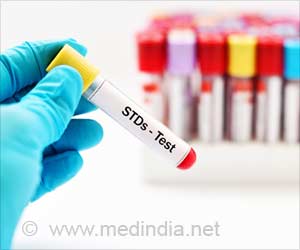There is "enormous silence" in India around adolescent sexual and reproductive health issues, and this can be overcome through involvement of parents, in-laws, spouses and elders, says a new report by the International Center for Research on Women (ICRW) and partners.
More than half the population in India is younger than 25, and many adolescents, particularly unmarried girls, suffer serious reproductive health problems but face constraints in receiving care and treatment.Between 60 and 70 percent of adolescent girls are anemic. Early marriage, which increases the girls' risk of health complications due to childbearing and other problems, is also pervasive in India.
The report, 'Improving Reproductive Health of Married and Unmarried Youth in India: Evidence of Effectiveness and Costs from Community-based Interventions,' released Monday, reveals that change can happen fairly quickly, in this case in three years or less.
"There is enormous silence in India around reproductive health issues, particularly for young people," said Rohini Pande, ICRW project director for the research programme.
"To break the silence around adolescent sexual and reproductive health, programmes must work with communities, including parents, in-laws, spouses, elders and other people who make decisions about young people's lives," said Pande.
The report is based on a 10-year research programme, funded by the Rockefeller Foundation, on most suitable interventions.
Advertisement
Studies have revealed that the median age at marriage for girls in India is 16, though it can be much younger in specific communities.
Advertisement
Both married and unmarried youth in India also suffer from reproductive tract infections. Because of the shame and stigma associated with such infections, young people frequently do not seek treatment, which can cause more serious health problems, including infertility.
Findings indicate that the vulnerability of girls to reproductive and other health problems, including poor nutrition and anemia, stem from beliefs about their social roles, which often are reinforced by the family and community.
"Before the 1990s, we had almost no information on adolescent sexual and reproductive health in India, and therefore little guidance on how to approach adolescents' constraints," said Kathleen Kurz, who leads ICRW's work on reproductive health and nutrition.
"The findings from this research fill in gaps about how to design and evaluate programmes to empower youth and improve their reproductive health."
Some of the encouraging offshoots of the interventions with both married and unmarried boys and girls, in age 12 to 30, as well as their families and communities has helped raise the age of marriage of girls in rural Maharashtra by a year - from 16 to 17.
The percentage of unmarried girls who ate three or more meals a day increased from 2.9 percent to 27.7 percent in the Pune city slum intervention.
In the rural Maharashtra study, the knowledge of young married women and the use of services for a wide variety of reproductive concerns, including reproductive tract infections (RTIs), increased.
In the study communities of rural Tamil Nadu, the overall prevalence of RTIs decreased by half between 1997 and 2006.
Unmarried girls in rural Maharashtra and Delhi slum programmes experienced greater self-confidence and improved ability to negotiate important decisions, such as staying in school and on when to get married, with their parents and other important people in their lives.
Source-IANS
SRM





